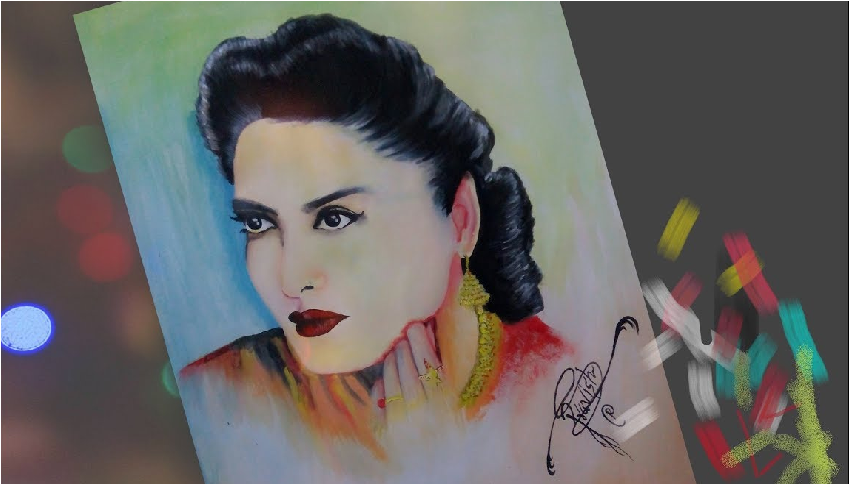In this article, we will cover the questions about Chaucer’s artistic method in The Prologue to The Canterbury Tales. We will also discuss the statement “Chaucer found his English a dialect and left it a langue.” Also, we will answer the question by illustrating that what are the salient features of Chaucer’s style.
Introduction
The style of an author is his distinctive manner of writing or expressing thought in language. In commenting on Chaucer’s style, it would be well to remember that he was writing in English at a time when that language was in a rather poor state of development. His sure instinct and judgment, however, made him choose the dialect of his native land when his contemporaries like Gower, preferred to write in Latin. To Chaucer, goes the credit for having developed the condition of his native language to such an extent, that only the addition of blank verse was required to make English poetry fully equipped.
His versatility in experimenting with new verse forms makes it impossible to exaggerate his importance as the Creator of English versification. He brought to an inadequate dialect the beauty of fluid simplicity, conversational ease as well as literary grace. He took up a foreign language, especially French. Then, he infused the rough English dialect with the refinement and polish of the French language. He brought flexibility to his native language.
Conversational and Colloquial Style
As we read The Prologue to The Canterbury Tales, we are immediately struck by its conversational tone. The verse flows with a pleasing fluidity. It shows Chaucer’s mastery of the decasyllabic couplet. We find ordinary speech, common proverbs, and idiomatic terms, and even contemporary slang in his poetry. It provides a conversational slant to Chaucer’s style.
Some phrases, which Chaucer often tags on the end of the lines in order to ensure an easy metrical flow, have a conversational and personal quality.
Of twenty years of age he, I guess
or
Of North folk was this Reeve of which I telle
And he was not right, I undertake
Numerous other such lines, seem to establish direct contact with the reader which is the essence of a conversation. It is done through phrases such as “I teller”, “I guess”, “I seyde”, “as I was war”, etc. which seems to have a distinct aura of the plain speech of the time. A passage such as:
So hadde I spoken with them everchon,
That I was of hir felaweshipe anon
And made forward erly for the ryse,
To take our wey, then as I yow devse
Chaucer’s use of contemporary idiomatic terms and phrases adds to the colloquial style. One such instance, which immediately comes to mind, is in the lines about the Monk:
He yaf not of that text pulled hen
and
but thilke text heeld he nat worth an oyster
In The Prologue, we come across a racy and forceful style, which has in the pungency of a proverb. It is especially evident in the fabliaux, which presents the comic aspects of ordinary life. Chaucer uses such colloquial words as quoted above, as a standard language in the poem. It seems surprising, for it contrasts vividly with the high literary tone of the opening passage of The Prologue. Chaucer’s skill, in fact, lies in the smooth transition, which has affection from the high to the colloquial style.
Triumph of style in the opening lines of “The Prologue”
The opening passage of The Prologue is in the tradition of Medieval writers, who paid tribute to, and welcomed spring at the beginning of their works. But, as D.S. Brewer observes, the triumph of the opening as literary art lines in its purposive structure and its style. IN the opening passage, we have smelt the spring air, and have swooped in imagination down from the Zodiac to the Tabard.
The focus has carried us from a general view of the season to fix sharply on pilgrims gathered at an inn near London. The vision is spacious as well as precise. The passage is in a ‘high style’ with modification. In the term ‘Zephyrus’ connected with ‘sweet breath’, we have the fanciful personification in combination with sensuous realism. Harmonization of Splendor and simplicity is beautiful. The ‘high’ literary tone of the astronomical allusion is followed by a line of striking simplicity and musical charm: And smile fowlers makes melody.
Kemp Malone traces the gradual steps by which the ‘high’ style in the opening passage gives way to the plain and simple, which would be Chaucer’s appropriate style in the rest of The Prologue. The style stays ‘high’ for eleven lines. The twelfth line is plain and straightforward enough. But the fall is not too swift. The next two lines,
And palmers for to seken straunge strondes
To ferne halves, couthe in sundry londes
Have a certain dignity and remoteness from everyday life. The next three lines show more of the common touch and bring the English reader home:
And specially from every shires ended
Of England, to Canterbury they wended,
The holy blissful martyr for to sake
With the next line, we come to clear simplicity and plainness: “That hem hath helped when that they were seeker”. The transition is complete. From the elaborate beginning, we have traveled to the easy familiar style, in a smooth and following manner.
Forceful Directness and Immediacy of Style
Chaucer’s style has a directness and immediacy, which comes from the habitual employment of the verb ‘to be’ in describing the pilgrims. His statements are so plain and simple that they admit no qualifications.
“A monk there was”, “his heed was balled”, “whit was bearding as if the dyadic”: these statements are clear, solid, and irrefutable. The terms in which that pilgrim are described, are simple and direct. The most common of the adjectives used are, perfect, gay, fair, wise, and worthy. They often gain their strength and directness through masterly placing in a line. The Wife of Bath comes alive before us in the simplest but so very graphic terms.
Forceful Directness of Figures of Speech
The simple immediacy, which marks the adjectives used for the pilgrims, is to be found in Chaucer’s images, too. The colors of rhetoric were the name given to figures of speech in the Middle Ages. Chaucer has plenty of images and similes. But they are all simple, direct, and never elaborate. At the same time, they have a vivid and arresting quality.
His months as greet was greeted Forney’s says Chaucer, and we get a direct picture of the cavernous mouth of the Miller. The Squire is “as fresh as is the month of May”. The Friar’s neck is as a lily (flour delays), and his eyes shine like “stars I the frostily nigh”. The Miller’s beard is as red “as any sow or fox”, while the Franklin has a beard “white as is a daisy”. The graphic description for the tuft of hair on the ward of the Milliner’s nose is unforgettable. It is red “as the bristles of a sow’s ears”.
The derivation of images is from the common spheres of experiences. They are uncomplicated and direct. Chaucer does not employ extended smiles and metaphors in his poetry. His drawing of images is from homely and familiar fields of life.
Use of Intensifying Terms Emphasize a Point
A special stylistic device used by Chaucer is the emphatic manner in which he underscores his point. Some of his statements have an air of clear finality. “He was a very parfait, genital Knight”, sums up the Knight in simple and direct words. Some of the words, which Chaucer uses frequently to intensify and emphasize a point, are full, well, all certainly. They are all affirmative and positive terms. It seems to indicate a stylistic device through which Chaucer associates himself with a positive and generous outlook on life.
The Monk is “a lord full fat and in good point” and “certainly he was fir prelate”. The Frank in bad “full many a fat patriarch” is his house to satisfy his epicurean taste. The use of these intensive adjectives is at its most effective in the description of the five Guildsmen. Though they are described collectively, they are given a sharper reality by the emphasis implied in the terms, full and all.
In the opening passage, we have smelt the spring air, and have swooped in imagination down from the Zodiac to the Tabard. The focus has carried us from a general view of the season to for sharply on the pilgrims gathered at an in near London. The pardoner is yet another typical figure with individual touches. His business was to sell indulgences or remission of punishment to sinners who repented. The Pardoner is dishonest and he carries a set of false pardons supposedly come from Rome. He also carries relies on on, the authenticity of which is doubtful. He passes off pig’s bones as the relics of saints. With all these typical traits of the fourteenth-century pardoner, we are told. His eyes glitter like a hare’s. He has smooth, beardless cheeks and a thin bleating voice like a goat’s.
Secular Characters
There is a doctor among the pilgrims of The Canterbury Tales. We can easily say that he is typical of the fashionable medical practitioner of his day. Even his acute knowledge of astrology is in keeping with medieval practice. He is not above exploiting his patients’ needs. He has made plenty of money. His dress, which is blood red and blue-grey, sets him out as a distinct individual. His partiality for ‘gold in medicine’ is not as vivid as some of the other characters do have a special trait. He is in debt, though his manner hides the fact successfully. He is typical, however, in his desire to keep the seas free of piracy, and in his acquisition of money through usury and other illegal ideals.
Reeve is a clever man. He is typical of his class in his ability to manage a granary and to predict the harvest. Like other reeves of the age, he, too, has made money by cheating his lord. Chaucer’s Reeve is, however, a slender framed man with a choleric temper. He is very closely shaven and his legs are long and lean. These are all vivid personal details, which make the Reeve individual as well as typical.
Realistic Approach
Chaucer has a comprehensive vision of the world. He was aware, like all realists, that the world is composed of all kinds of people, most of whom are a mixture of the good and the bad. There are not only black and white aspects in life, but all shades of grey are to be found in it.
Furthermore, the healthy, unhealthy, ethical, unethical, bad, and good were not to be found in clear but contrasts in life. All opposites and contradictions were often to be found in a surprising and inextricable combination. Chaucer saw this and endeavored to present life in all its true colors. To this end the request,
“I beg to you, in courtesy, not to condemn me as unmannerly, if I speak plainly and with no concealing.”
He wishes to avoid “things invented and… phrases new” in the presentation of his character’s dealings. He had nothing of the frowning moralists or the zealous reformer. Also, he saw life and presented it as it was. He left it to others to seek morals from it. He broke free from the bondage to tradition and convention. His poetry is that of a realist, a humanist, and has none of the oral prejudice, which characterizes other medieval English poets.
Chaucer’s Sympathetic Attitude
What is noteworthy, however, is that Chaucer looks upon all the characters of dubious moral stature with a free and sympathetic attitude. He is not horror-struck at the existence of such depravity and baseness. He is tolerant and willing to be amused by all the knavery. However wicked some of the characters are, Chaucer does not rant in moral indignation at them. Indeed, he does not even show any sharp aversion towards them. He seems to be quite grateful that he has been given the opportunity of deriving some pleasure from having met such knaves and rascals. He shows no hate towards any of them. Though he is fully aware of their moral shortcomings, he does not rail at them in disgust.
Chaucer is not a Social Reformer
The folly and depravity of his fellow human beings did not shock Chaucer. The decidedly immoral conduct of many of the characters in The Prologue does not drive Chaucer into a frenzy of horrifying moral indignation. He does not aim at social reformation. He saw the vice inherent in human beings but does not attack it violently. But, one might ask, is not Chaucer satiric and ironic, and is not satire and irony the beloved weapons of a social reformer? Chaucer’s satire and irony, however, are of a benign and tolerant nature. His primary aim is to drive morals from his portraiture, one is quite welcome to. That brings us to the consideration of whether Chaucer’s poetry is immoral.
Conclusion
It is clear that Chaucer did not set out the reforms of society. He certainly does not show a strong ethical bias. His vision was too broad, too tolerant, and benign to allow strong moral sermonizing. Human frailty existed, and Chaucer accepted it. He did not feel the necessity to do a judge’s cap and condemn wickedness and evil. His poetry presented a picture of life in its totality and reality. Such a reproduction of reality might have been dry, morose, and bitter. It might have bred disgust and hatred for life and men. But Chaucer without flattering his model placed it in an atmosphere, which is good and not is glad to be in the world. However, it is quite a different thing to say that Chaucer was immoral. That he was not.




